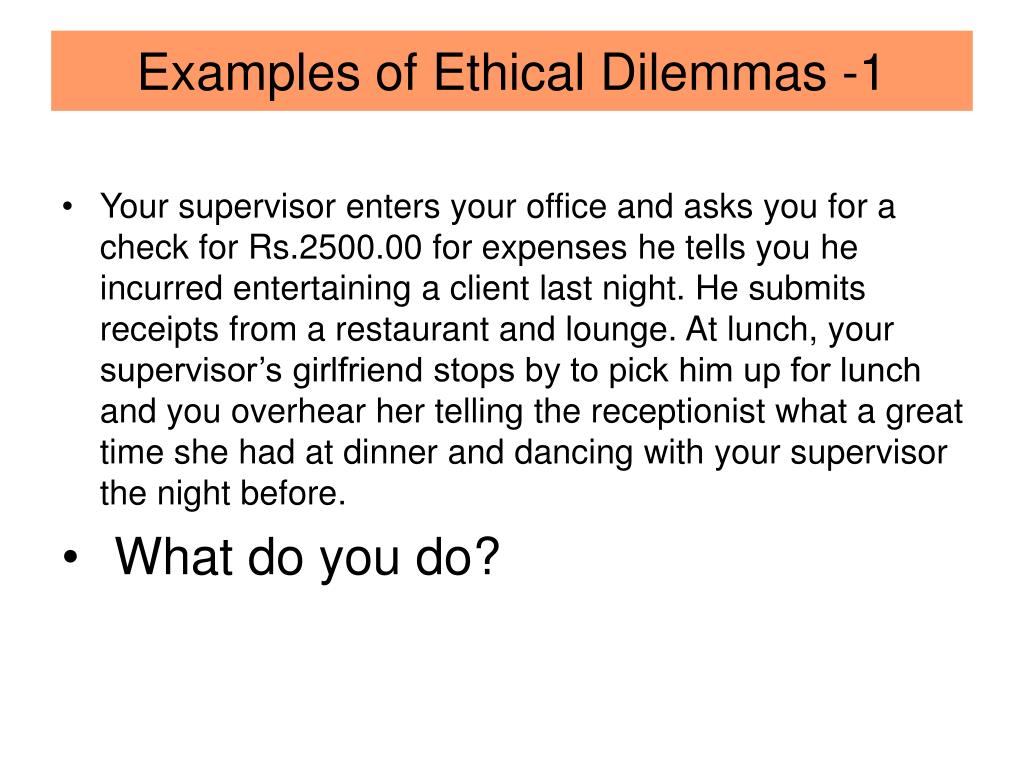Give An Example Of An Ethical Dilemma
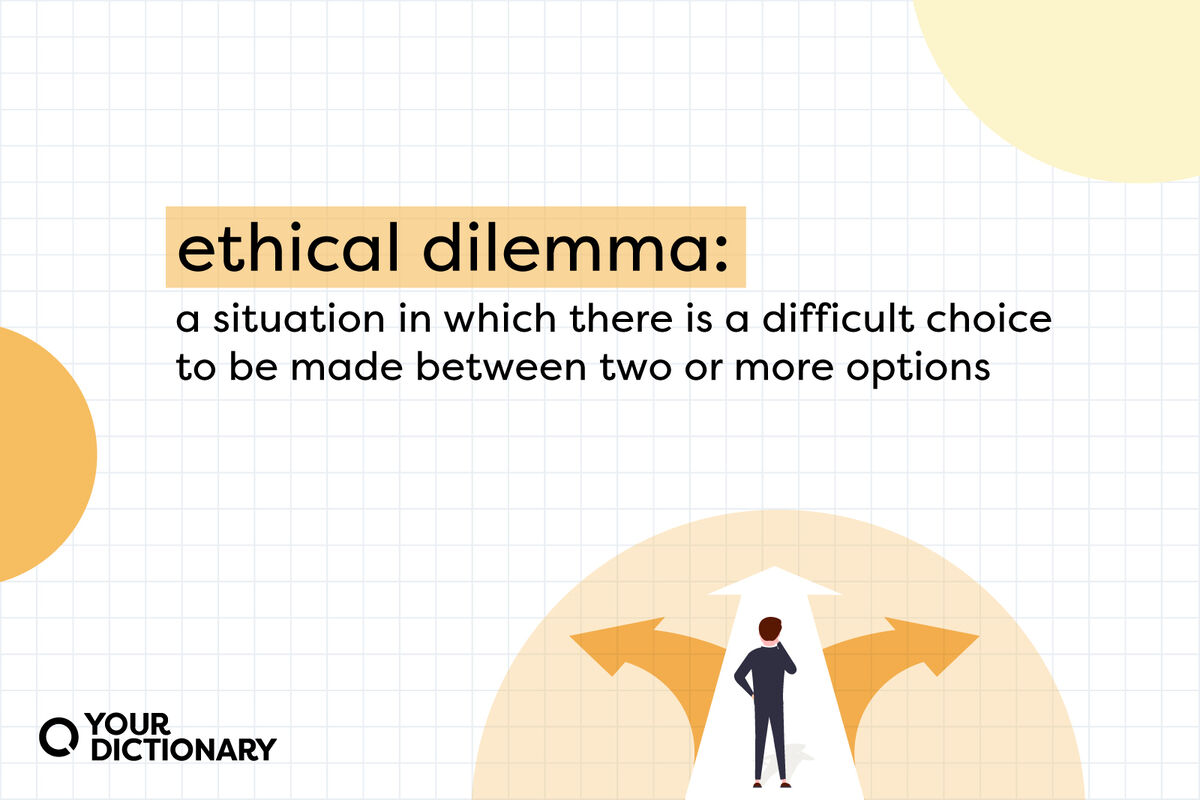
The aroma of freshly brewed coffee hung heavy in the air, a stark contrast to the tense silence that had settled over the conference room. Outside, the bustling city hummed with its daily rhythm, oblivious to the moral wrestling match unfolding within these walls. Sarah, a seasoned software engineer, stared at the lines of code on her screen, her brow furrowed in concentration, a knot of unease tightening in her stomach.
At the heart of this quiet storm was a classic ethical dilemma: Should Sarah prioritize the company's profit by implementing a potentially flawed algorithm, or should she advocate for a more robust, albeit delayed, solution that prioritizes user privacy and data security, even if it means missing a crucial deadline and potentially jeopardizing a significant contract? This scenario highlights the complex moral landscapes professionals navigate daily, often with far-reaching consequences.
The Backstory
Sarah had been working tirelessly on a new algorithm designed to personalize user experiences on the company's flagship platform. The platform, a social media network connecting millions globally, relied heavily on user data to curate content and targeted advertising. The initial algorithm, painstakingly crafted, met all ethical and security standards.
However, as the launch date loomed, the marketing team discovered a rival company was about to release a similar, faster system. Pressure mounted from upper management to accelerate the deployment. To meet the accelerated timeline, the team discovered a shortcut—a less secure algorithm that mined significantly more user data but could be implemented within weeks.
This "shortcut" sparked immediate concern among the engineering team, particularly with Sarah. The new algorithm, while technically functional, significantly increased the risk of data breaches and potential privacy violations.
The Ethical Crossroads
Sarah understood the implications. Implementing the flawed algorithm could lead to increased profits and a competitive edge, at least in the short term. It could also mean a significant bonus for the team, and bolster her standing within the company.
Conversely, advocating for the original, more secure algorithm meant potentially missing the deadline, angering upper management, and even losing the contract. It also meant standing against the prevailing pressure from her colleagues, some of whom were keen to launch the product quickly and reap the rewards.
Sarah considered the potential impact on the users. A data breach could expose their personal information to malicious actors, leading to identity theft, financial loss, and emotional distress. This was a heavy burden to bear.
Navigating the Gray Areas
According to the IEEE Code of Ethics, engineers have a responsibility to "hold paramount the safety, health, and welfare of the public." This principle resonated deeply with Sarah. It underscored her obligation to prioritize user security and privacy, even if it meant facing professional repercussions.
She started by documenting her concerns, outlining the potential risks of the faster algorithm in a detailed report. She then scheduled a meeting with her manager and the head of security to present her findings. She prepared for a difficult conversation, steeling herself against potential pushback.
Sarah decided to argue for a phased rollout, launching the original algorithm first and then working to optimize it for speed without compromising security. This compromise offered a way to meet the deadline, albeit in a less aggressive manner, while safeguarding user data.
The Aftermath
The meeting was tense. The head of marketing voiced strong objections, arguing that the slower rollout would make them lose market share. However, Sarah’s manager, after carefully reviewing her report, recognized the potential risks and ultimately sided with her.
A compromise was reached. The company agreed to a phased rollout and committed to investing in resources to optimize the original algorithm for speed and efficiency. While the initial launch wasn’t as flashy as planned, it prioritized user security and long-term trust.
"Ethical decisions are rarely black and white," Sarah reflected later.
The experience left an indelible mark on Sarah. It reinforced the importance of speaking up, even when it's uncomfortable, and of prioritizing ethical considerations over short-term gains. She hoped that her actions would inspire others to make similar choices, creating a culture of ethical responsibility within the company.
Ethical dilemmas like Sarah's are not unique to the tech industry. They occur in all professions, demanding careful consideration, courageous action, and a commitment to doing what is right, even when it's difficult. The choices we make in these moments define not only our professional integrity, but also our character.

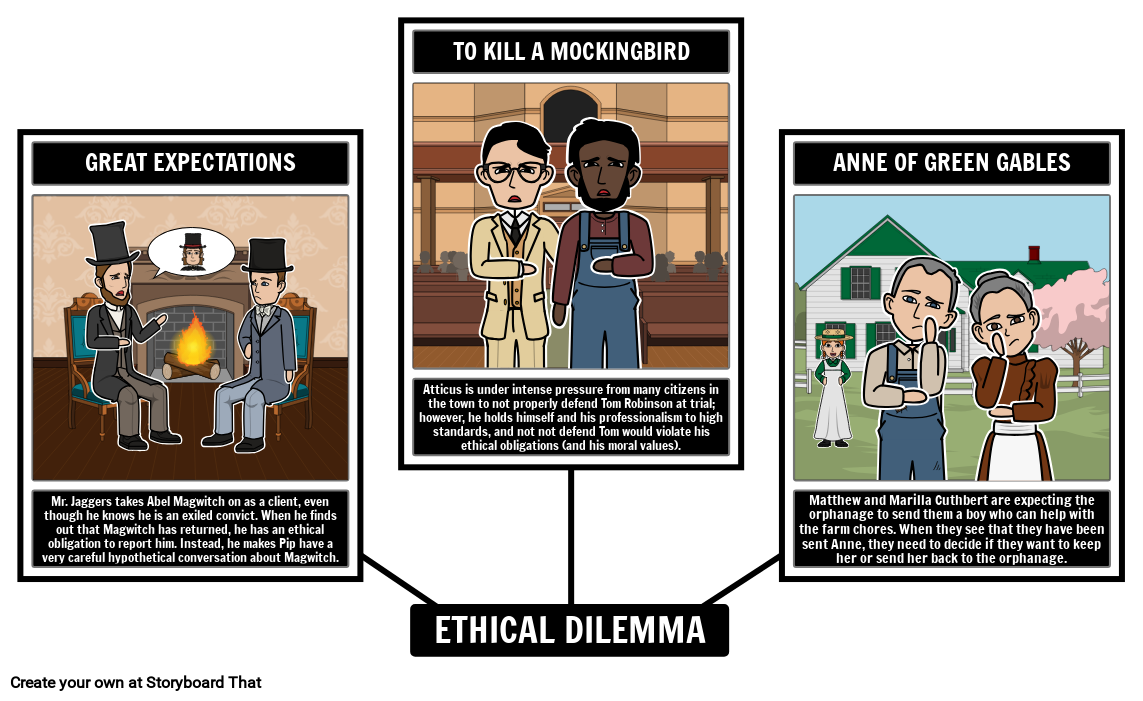

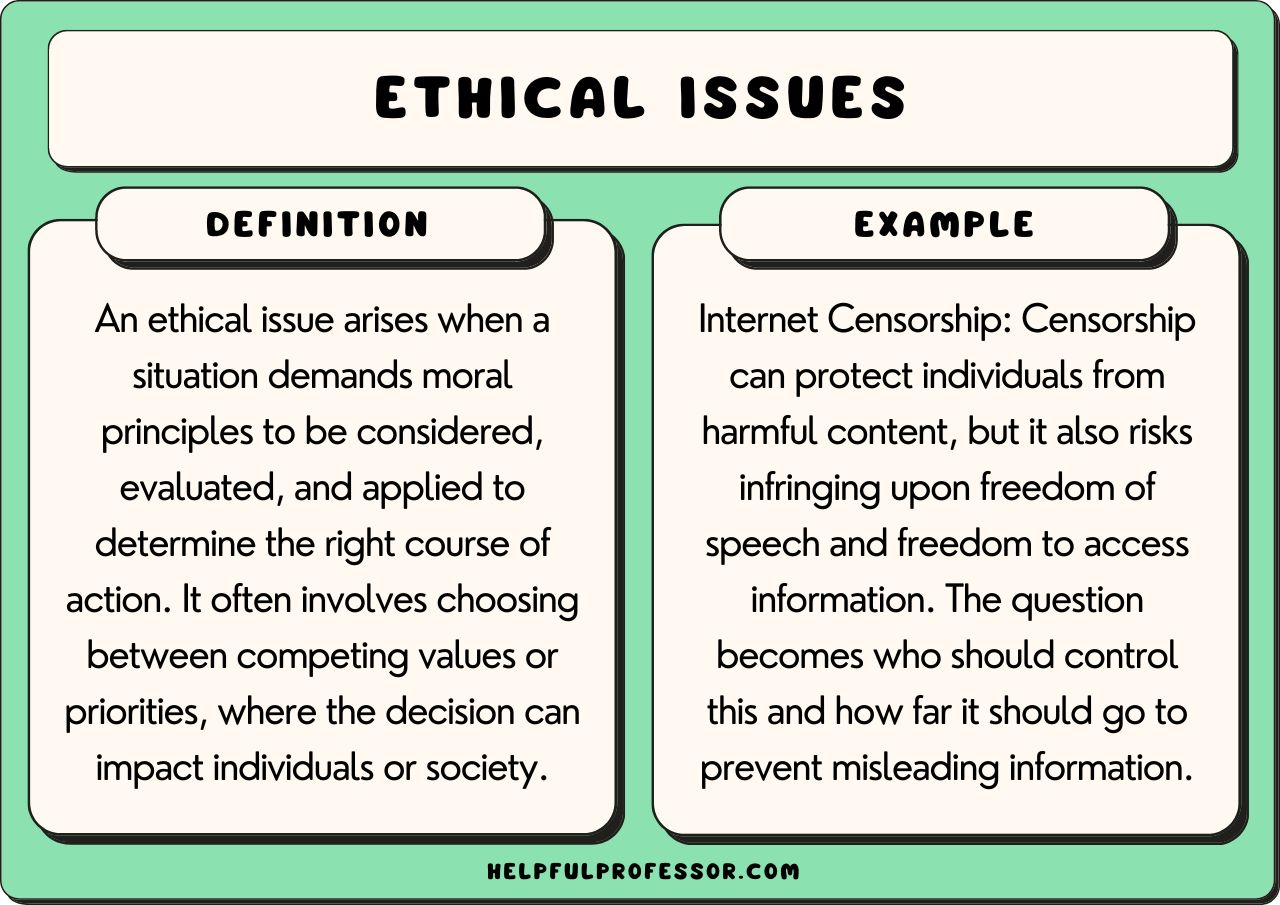


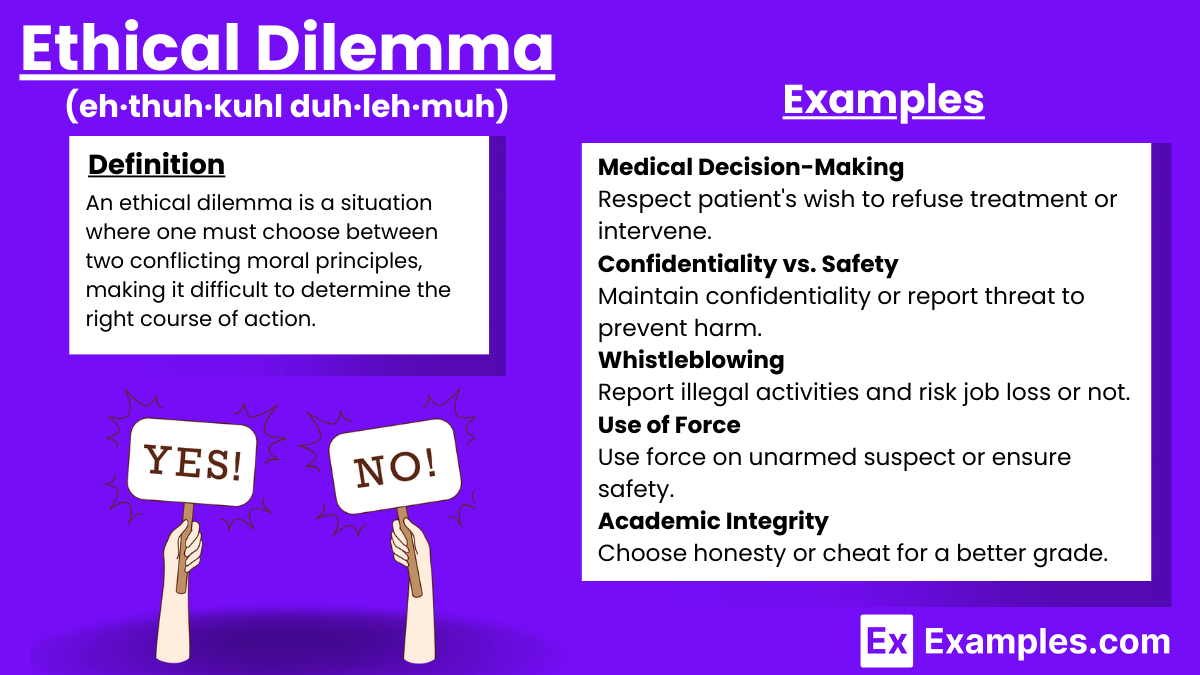
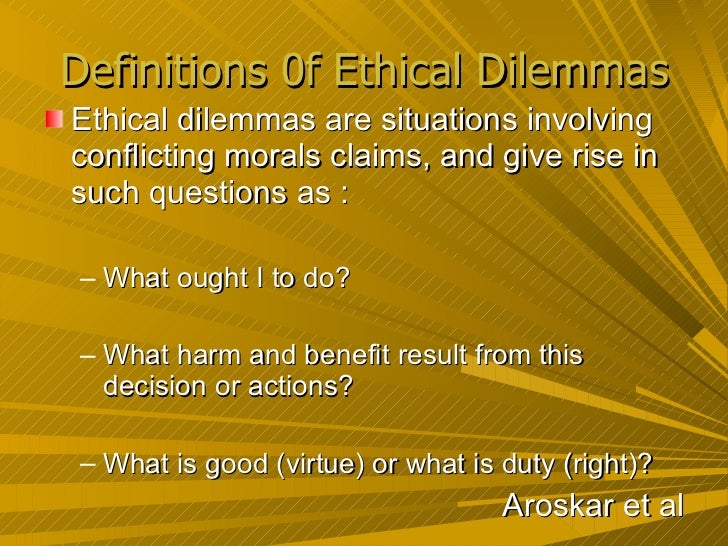
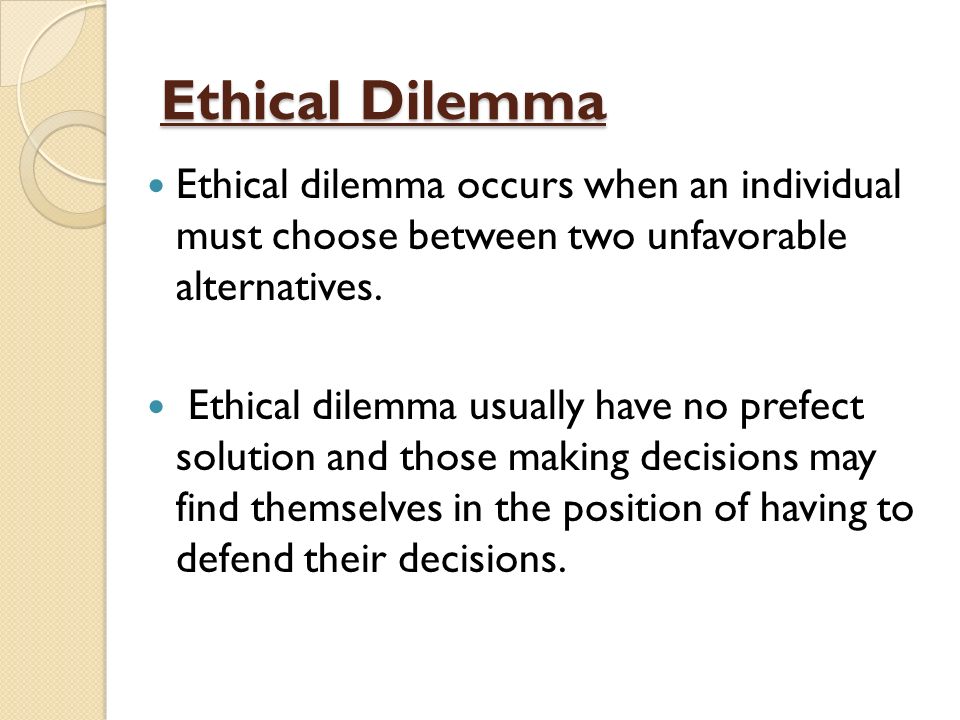
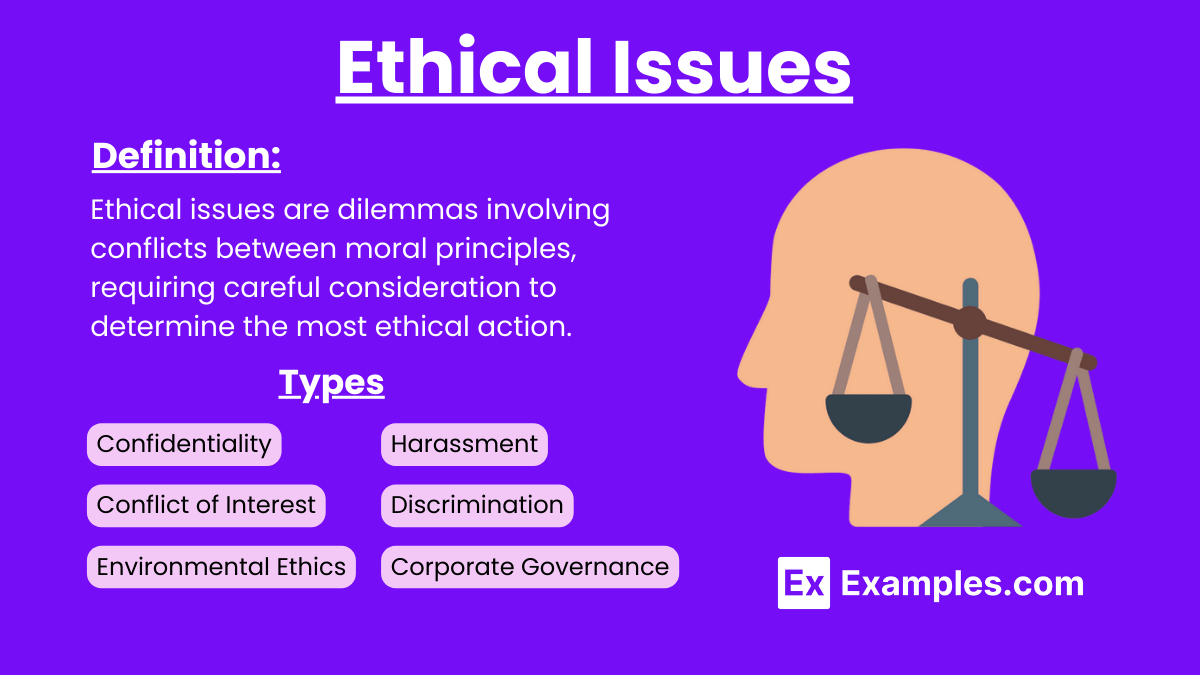
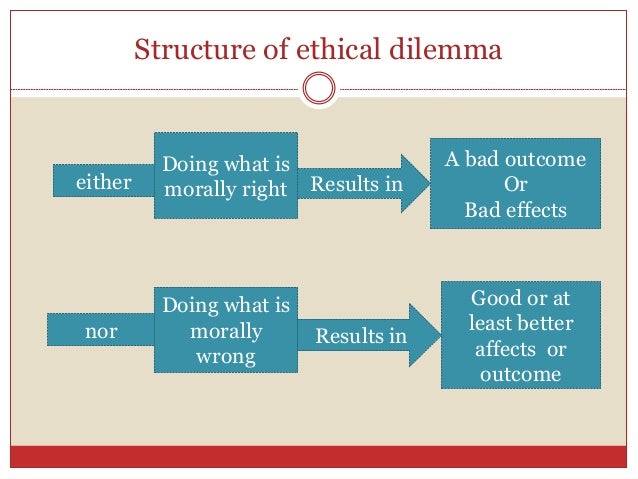
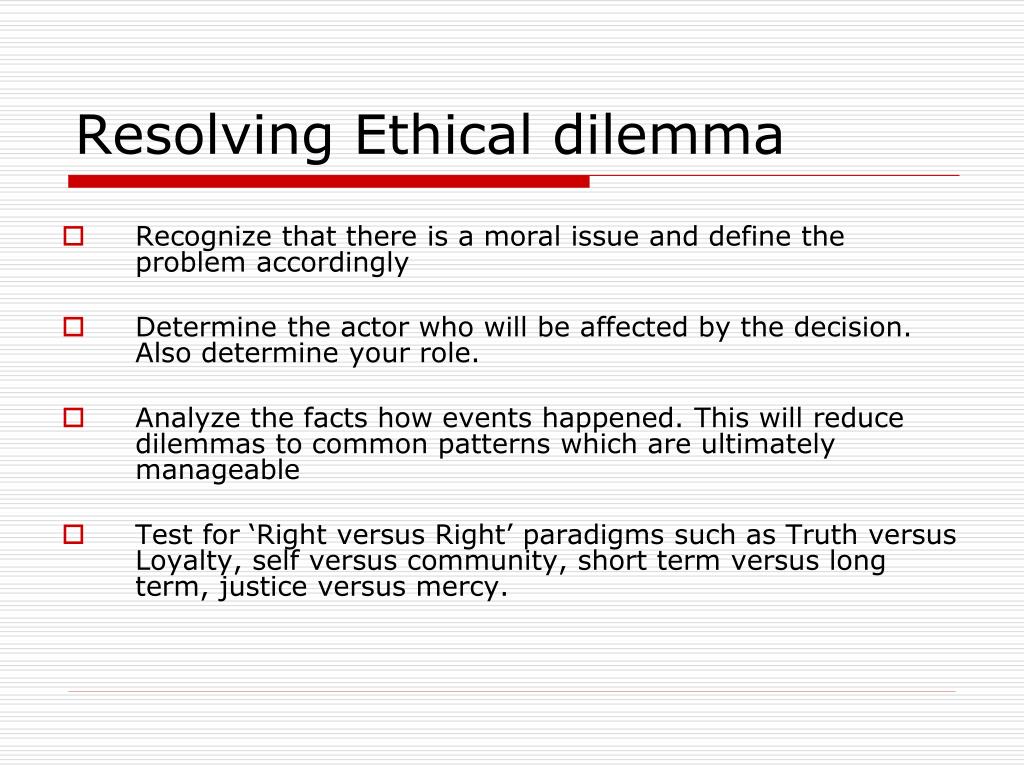

![Give An Example Of An Ethical Dilemma Overview Of What An Ethical Dilemma Is: [Essay Example], 522 words](https://gradesfixer.com/wp-content/uploads/post-preview/33266-post-preview.webp)



